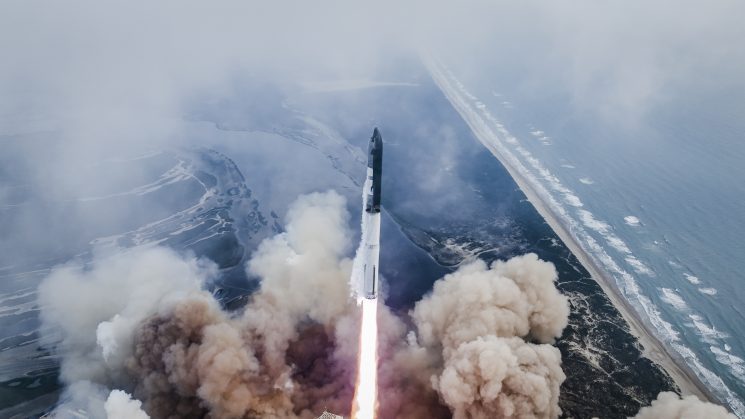
By Tyler Josephson
SpaceX Starship lifted off from southern Texas on its third test flight on March 14. SpaceX is developing Starship and its booster, Super Heavy, on sub-orbital test flights which target each major factor of space launches.
Starship, the most powerful rocket ever launched, is an interplanetary heavy-lift rocket designed by Elon Musk’s rocket company SpaceX. Currently experimental, Starship will soon dominate the modern-day space race: multi-planetary life.
Starship is a unique rocket that doesn’t stick to the ‘norms.’ Built in a remote area of southern coastal Texas, Starship is primarily made out of reinforced stainless steel and utilizes a liquid methane, liquid oxygen combination.
Although under frequent investigation from safety reports, environmental surveys and local impact investigations by agencies like the Federal Aviation Administration (FAA), SpaceX continues to rapidly develop prototypes and test vehicles of Starship and Super Heavy. The Starship system will be a heavy-lift spacecraft with capability of transporting both cargo and passengers to space stations, the moon and Mars. Starship is expected to land humans on the surface of the Moon in the year 2026 as the lunar lander selected for NASA’s Artemis mission.
Starship’s test flight in March showcased many procedures that SpaceX was targeting. During its coast phase, where the spacecraft cruised in space, SpaceX tested different components including its cargo door and refueling port. Such tests are essential in preparing Starship for later operational usage.
The test ended abruptly when the company lost communication with the rocket upon reentering Earth’s atmosphere, where it presumably broke apart under the extreme conditions. SpaceX still considered the mission a success as it surpassed the failures of its previous test flights, including a failed separation between Starship and Super Heavy during Flight Test 2.
The next Starship test flight is expected in early May where the spacecraft will focus on atmospheric reentry, the portion of the flight most crucial for success. SpaceX is quickly speeding up turnaround times between test flights, although FAA launch licenses remain the longest wait.
SpaceX continues pursuing other operations in the space realm, such as Falcon 9, a medium-lift rocket that has successfully launched 37 missions so far in 2024. Falcon 9 is an industry-leading, multi-use reusable spacecraft that launches a large array of space missions.
SpaceX has used Falcon 9 to launch their Starlink Internet satellites, government missions, private satellites and astronauts to the International Space Station. Falcon 9 was the first spacecraft to launch American astronauts to space from American soil since NASA´s shuttle missions.
Once operational, Starship will take over as SpaceX’s primary launch vehicle with capability of launching large payloads and operating unique missions. The future of space exploration will be reshaped by SpaceX’s advancements soon to come.





